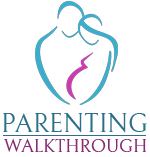Older children and adolescents can respond to psychological difficulties with pain of psychogenic origin.
Prevalence of Psychogenic Pain
Psychogenic disorders were encountered in 8 boys (2.6%) and 13 girls (8.4%) among our patient population.
Localization of Psychogenic Pain
- The pain was localized in various parts of the body:
- Headache in 15 cases
- Pain around the heart in 3 cases
- Hand pain in 2 cases
- Abdominal pain in 1 case
Association with Other Disorders
All the children with psychogenic pain also exhibited other neurogenic or behavioral disorders.
Triggers for Psychogenic Pain
The pain was triggered by emotional loads such as school failure, jealousy of another child, going to school, dyslexia, suppression of left-handedness, conflicts between parents, change of educator, and transition from village to town.
Identification with Adults in the Family
In two cases, psychogenic pain appeared through identification with adults in the family who had physical complaints.
Similarity to Hysterical Manifestations
Psychogenic pain has a similar motivation to hysterical manifestations.
Diagnosis of Psychogenic Pain
Possible organic causes of the disorder must be ruled out before considering psychogenic pain.
Treatment of Psychogenic Pain
In the treatment of hysterical distress and psychogenic pain, the neurotic symptom should be ignored initially. The environment should not allow the child to gain any privilege from it. The educational process should be corrected, and the child’s mental development should be directed in a healthier direction. Psychotherapy is necessary for the child, and the educators should seek professional counseling.




